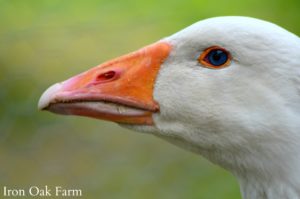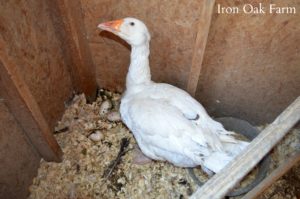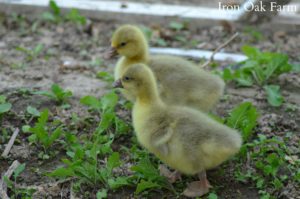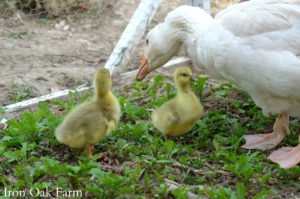Jennifer Sartell
Story and photos

The term anthropomorphism is to assign human traits to animals or inanimate objects. Being active in many livestock forums, farm Facebook groups and other animal specific online communities, I’ve often heard this term used in an accusatory manner. Usually in the comment section of some article or post…people get upset when you claim that animals can feel love, compassion or any number of complex, human-type emotions. Many are quick to point out that livestock are not pets and vice versa.
Pets?…Livestock? just terms. Terms we use to compartmentalize the animal world into animals for use and animals for pleasure. But they’re all animals…and so are we.
Babies on the Farm
I gave birth to our first child last October. Like any parent knows, the process of having a child changes you forever. And it has, in all the difficult and miraculous ways that it does. I often wonder how something so common, can be so personal and so wondrous all at once.
Since having our own baby, it has unlocked some sort of deep empathy that I was never able to understand before. I no longer see children in the same way. I had a particularly difficult pregnancy and delivery and when I see a child I see a beautiful creature who came to be through pain, sacrifice and most importantly love.
This empathy has translated to the animals on our farm.

Our goose decided to go broody this spring. Each day she would lay her egg in the corner of our coop. We don’t necessarily want more geese, so I was diligent to collect her eggs as soon as I saw them.
But she was persistent.
She gathered bedding in the corner, using her neck and head as a shovel, pulling the pine flakes up toward her sitting body. Arranging her nest with care and working on it all day long for a week or more.. Our gander, who is usually a sweet goose, stood guard hissing and lowering his neck if anyone dared get near.
The pair of them put up such an intimidating display that after a while I was afraid to chase her off the nest to collect eggs. I was bit by a goose as a child and it left a painful, black blood blister for about a week. I wasn’t about to make that mistake again.
Sitting the Nest
She would leave the nest for a short period each day to eat and drink. One day I saw her off the nest and went running out to collect the eggs. When I reached the coop the nest was empty. Did something eat the eggs? I dug through the pile of pine flakes and realized that she had buried the eggs before she left for her short break.
After that I couldn’t do it. Something about her mothering instinct… to hide her babies, to take the time to wrap them up safe before she left to take a drink touched me. I could no more take those eggs away from her than I could take someone’s baby from their arms.
I quickly counted eight eggs just as the goose and gander pair realized I was messing with the nest and came running back hissing and honking me away. She plopped back down on the nest and began gently uncovering her eggs. I caught glimpses of her motherly work between her downy under side and her large, thick legs as she tenderly turned the eggs and removed the flakes of woodchips with her beak. She moved deliberately, with care. Maybe it was animal instinct…maybe it was love. I have no idea what emotional range a goose is capable of feeling, but her actions spoke with concern for her babies. It wasn’t a methodical “programmed” base-intellect used to further her species. It was motherhood in full presence.
After that, we resigned to let her be a mother and let our little goose family undergo this experience. We set up a small sanctuary with a piece of plywood so the chickens wouldn’t stress her and gave her her own food and water dish.
Goslings
Each day I’d check for goslings. Goose gestation is typically 28 to 35 days depending on the breed. But I wasn’t exactly sure when she had become serious about her sit.

One night, Zach came in from locking up the poultry and happily announced that there was a gosling peeping under Mother Goose. We rushed out to the coop with flashlights to see the new baby. There were two.
Mother Goose sat on the nest for a few more days and then decided that her sit was over. Of the 8 eggs she laid, those two were the total of her brood.
 Mother and Father Goose dote on their goslings, each taking the parental role very seriously.
Mother and Father Goose dote on their goslings, each taking the parental role very seriously.
We noticed something interesting shortly after the goslings hatched. When she was finally done sitting, we moved her to a different wing of our coop so the little Goose family could have some privacy and so we could feed the goslings appropriate feed and use a waterer easy for them to drink.

Our Pekin duck pair have become quite attached to our geese. But we didn’t know how they would react with the goslings so we kept them separate. Once separated the geese and ducks were beside themselves trying to get to each other. Mother Goose was beating the fence with her chest and the ducks were trying every hole from the opposite side to see if they could fit through. As soon as I let the ducks in with the goose family everyone was happy.

So Mother Goose, Father Goose and Aunt and Uncle Duck are happily looking after the goslings. Mother Goose looks a bit disheveled, her feathers are frayed and she’s thinner from her limited diet during the long sit, but she seems content and happy.

I laugh and feel a bit of camaraderie with poor mother goose. My post-baby body is certainly different than it was a year ago. My feathers too are a bit frazzled so to speak. But like Mother Goose, none of that matters. Our little one’s have made us mothers and that’s a term that crosses the lines of species.












